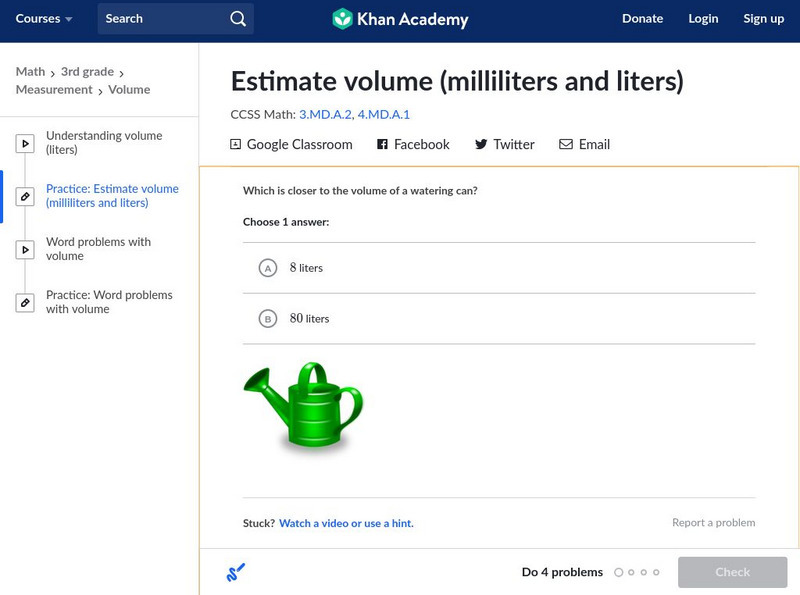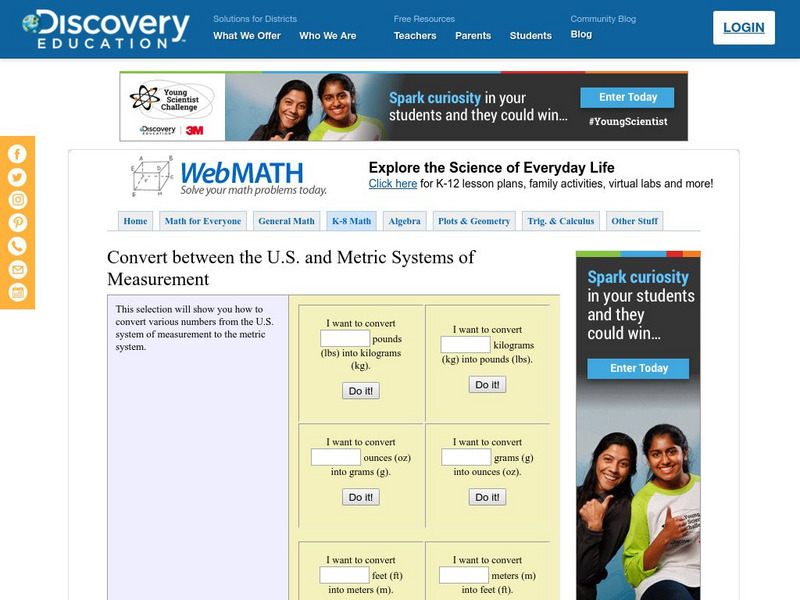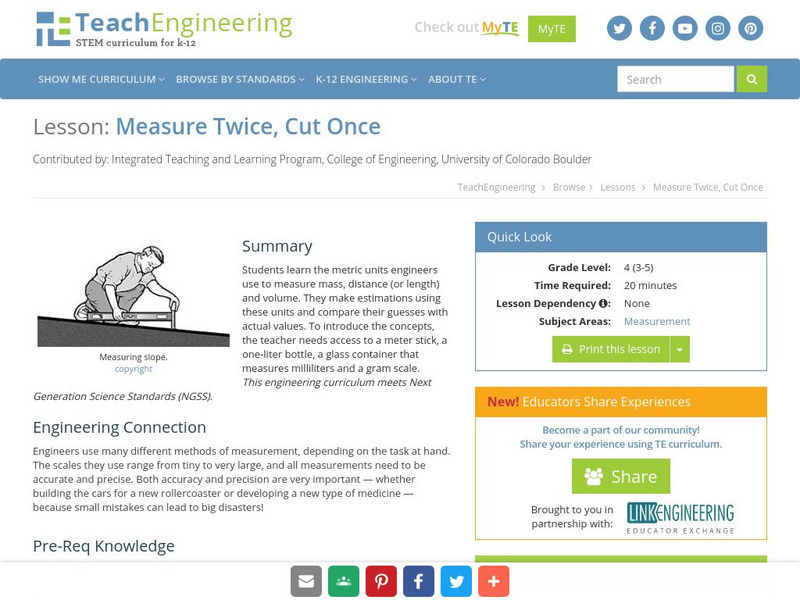Curated OER
Metric Mania
Students practice converting units of measurement using the ladder method. In this metric conversion lesson plan students practice converting metric measurements and filling out the worksheet.
Curated OER
Graphing Inertia: An Oxymoron?
Eighth graders investigate Newton's Law of Inertia in order to create a context for the review of the use of different types of graphs. They practice gathering the data from an experiment and put it into the correct corresponding graph.
Curated OER
Exponents Problems
In this algebra worksheet, students solve problems containing exponents. They apply the properties of exponents to solve these problems. There are 10 questions with an answer key.
Curated OER
How to Host a Metric Field Day
Celebrate National Metric Week with a fun-filled field day where learners actively apply the metric system.
Khan Academy
Khan Academy: Estimate Volume (Milliliters and Liters)
Practice estimating the volume of real life objects using milliliters and liters. Students receive immediate feedback and have the opportunity to try questions repeatedly, watch a video or receive hints.
PBS
Pbs: Standard Measures and Conversions: Liquid Volume, Milliliters and Liters
In this Cyberchase Media Gallery, explore key concepts about liquid volume, including standard units of liquid measure and how to convert between them. In the accompanying classroom activity, students create a complete conversion chart...
Discovery Education
Discovery Education: Web Math: Convert u.s. And Metric Systems
WebMath offers a great site for practicing how to convert pints, quarts, gallons, to metric or vice versa. Can be used to check homework answers.
TeachEngineering
Teach Engineering: Measure Twice, Cut Once
Students learn the metric units engineers use to measure mass, distance (or length) and volume. They make estimations using these units and compare their guesses with actual values. To introduce the concepts, the teacher needs access to...
Math Is Fun
Math Is Fun: Metric Volume
The metric units used to measure volume are explained, with comparisons to real world objects such as a teaspoon and a jug.








